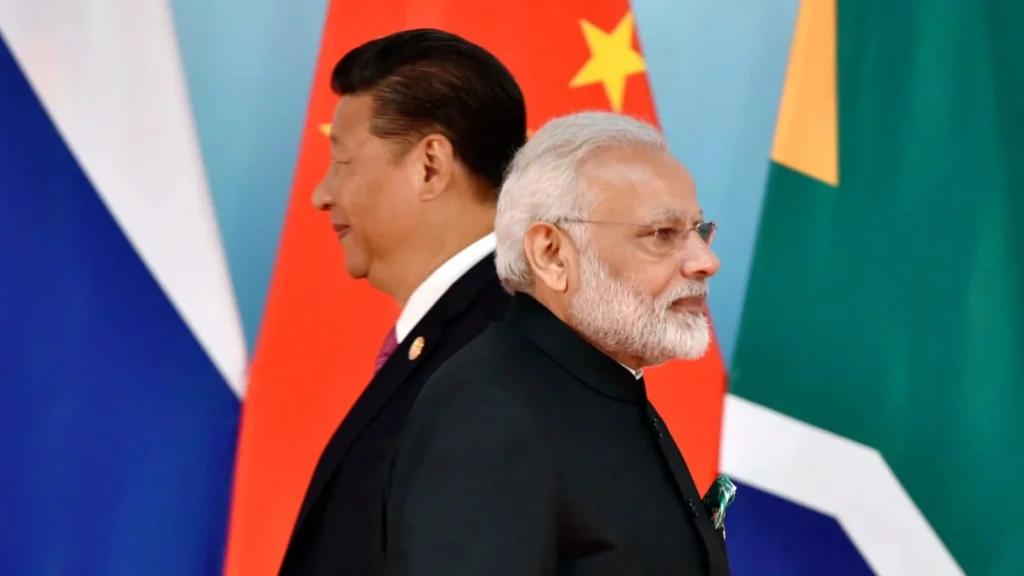India in touch with China on rare earth supply issue amid export curbs: MEA

India has opened diplomatic channels with China to address a growing challenge: disruptions in rare earth magnet supplies. These disruptions began after China imposed export restrictions that are now affecting India’s electric vehicle (EV) sector and electronics manufacturing. As the crisis unfolds, India is working on short-term relief through diplomacy and building long-term resilience by developing domestic resources and diversifying import partners.
Why Rare Earths Matter
Rare earth magnets are vital for manufacturing electric motors, smartphones, wind turbines, and defense equipment. Currently, China controls about 85% of global rare earth processing. Most Indian industries depend heavily on Chinese imports to meet their magnet needs.
In the last financial year, India imported nearly 460 tonnes of rare earth magnets, primarily from China. This year, the import volume is expected to increase to 700 tonnes, worth over ₹250 crore. The spike comes from growing EV production and rising demand for consumer electronics.
However, since April 2025, China has slowed exports by introducing new licensing rules. These changes have delayed shipments and created uncertainty in India’s supply chain.
Diplomatic Engagement Begins
India’s Ministry of External Affairs (MEA) confirmed that it is in active contact with Chinese officials. Spokesperson Randhir Jaiswal stated that discussions are ongoing in both New Delhi and Beijing.
“We are in touch with the Chinese side to ensure predictability and stability in rare earth supplies,” Jaiswal said during a press briefing.
Foreign Secretary Vikram Misri also discussed this issue with China’s Vice Foreign Minister Sun Weidong. These talks suggest that India is prioritizing a diplomatic solution to ease immediate pressures on key industries.
Auto and Electronics Industries Under Pressure
Tata Motors has issued a warning. If rare earth shipments don’t resume soon, it may halt production of electric vehicles like the Nexon EV and Punch EV by mid-July. Maruti Suzuki has already reduced production targets to conserve existing magnet supplies.
The electronics industry is also feeling the heat. According to Elcina (Electronic Industries Association of India), more than 21,000 jobs in audio electronics are at risk due to the supply crunch.
These disruptions underscore the urgency of the situation. Manufacturers are finding it harder to meet demand and fulfill orders on time, which could affect revenue and customer trust.
China’s Strategy and Global Impact
China claims that the new export controls aim to prevent illegal trading and protect the environment. But analysts believe the restrictions are also part of a larger strategy. As global tensions rise and countries try to reduce dependence on Chinese goods, Beijing may be using its rare earth monopoly as leverage.
Commerce Minister Piyush Goyal called this situation a “wake-up call for the entire world.” He believes it’s time for India to build strong, alternative supply chains and reduce reliance on any single country.
India’s Multi-Pronged Response
To address both the immediate crisis and future needs, India is pursuing a combination of strategies:
- Engaging New Partners
India is exploring rare earth imports from Vietnam, Kazakhstan, and Uzbekistan. These talks happened during recent diplomatic visits. The goal is to secure long-term agreements that reduce dependence on China. - Boosting Domestic Capabilities
The government has announced a ₹5,000 crore scheme to support rare earth processing in India. The plan includes tax incentives, subsidies, and fast-track clearances for companies that invest in this area. - Encouraging Public-Private Partnerships
Industry groups like SIAM and ACMA are working with private firms to build a rare earth ecosystem in India. This collaboration aims to develop capabilities from mining to manufacturing. - Building Strategic Reserves
India is considering the creation of a national stockpile of rare earth elements, similar to its crude oil reserves. This would help reduce the impact of sudden supply shocks in the future.
Toward Long-Term Resilience
India has its own reserves of rare earth minerals, especially along the coasts of Tamil Nadu and Odisha. However, the country lacks the infrastructure and expertise to process these minerals at scale. Extracting rare earths also requires handling radioactive byproducts, which complicates the process further.
To address this, India must invest in research and development. Institutions like IREL and BARC are exploring cleaner and more efficient extraction techniques. These efforts are key to building an independent, sustainable supply chain.
In the meantime, faster approvals and relaxed regulations could speed up the domestic rollout of rare earth projects. Collaboration with global technology partners will also play a vital role in building this sector.
Conclusion
The rare earth supply issue has revealed a major vulnerability in India’s industrial base. Although diplomatic engagement with China may provide short-term relief, the government understands that true resilience lies in self-reliance. By diversifying suppliers, investing in domestic processing, and partnering with the private sector, India can turn this crisis into an opportunity.
If these efforts succeed, India will not only secure its EV and electronics industries—it will also position itself as a global leader in the rare earth sector. That would mark a major shift in global supply chain dynamics and strengthen India’s role in the clean energy revolution.






